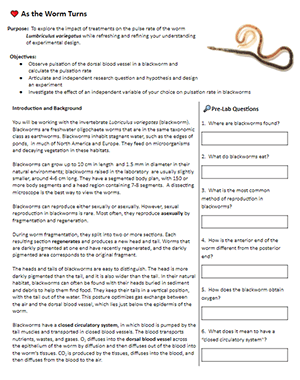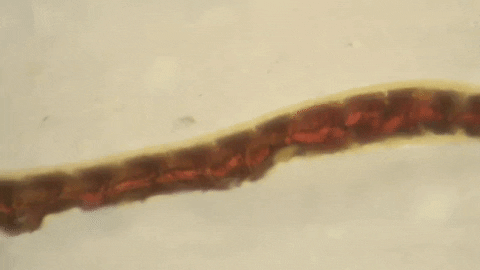
In this investigation, students explore how chemicals affect pulse rates in a blackworm (Lubriculus variegates). First, students read the background of the worm they are studying and review terms such as asexual reproduction, regeneration, and closed circulatory system. The introduction describes how blood travels through the dorsal blood vessel and oxygenates tissue. Due to the worm’s translucent skin, you can view the pulse rate with a hand lens or a microscope.
Students start the experiment by becoming familiar with handling the worm and identify the anterior and posterior regions. Then they count the number of pulses within the segments of a worm.
Next, students explore how caffeine affects the pulse rate by using caffeine solutions of differing concentrations. They do not design this part of the experiment, but must construct a hypothesis, null hypothesis, and identify variables. Then the collect data as they observe pulse rate changes in the worms.
In the next part of the investigation, students design another experiment to test the effects of other chemicals. Students can use their choice of chemicals. (The instructor can provide things like glucose, acetaminophen, ethanol, lavender, etc.) Students collect data and submit a final lab report. You could substitute the final lab report with a CER (claim, evidence, reasoning) or just shorten to have student submit a “results” document.

Pulse in the Blackworm
You can purchase blackworms from Amazon but you will probably have better results if you get them from biology supply companies. Worms can even be cultured in the classroom for future use. This may be a good activity to pair with lessons on the circulatory system and how invertebrates differ from vertebrates. Blackworms do not have a heart, but a heart dissection during this unit would pair nicely.

